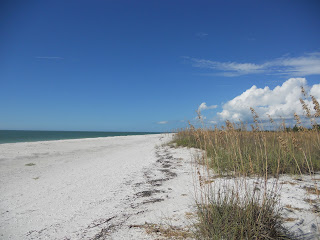 |
| I give a brief intro to mangrove ecology and identification |
 |
| Checking out a black mangrove's pneumatophores in the tidal creek we traversed |
 |
| One of my favorite parts; the mangrove tunnel |
 |
| Walking through a "field" of pneumatophores |
 |
| Ecotone between mangroves and coastal stand habitat |
 |
| The group learns about removal of exotic Australian Pines to preserve biodiversity on Keewaydin Island (standing in coastal strand habitat) |
 |
| Making our way through the islands dune system with the Gulf in sight |
 |
| Ecotone between dune and beach environments |
 |
| Beachcombing for coastal "treasures" |
 |
| The class shares with one another some of the items they found during their beachcombing experience |
 |
| Renee discusses Rookery Bay's efforts to balance coastal access and management on Keeywadin Island |
 |
| A quick lesson about how Calusa 'Indians used the chemical properties of the Jamaican Dogwood to stun and capture fish |
No comments:
Post a Comment